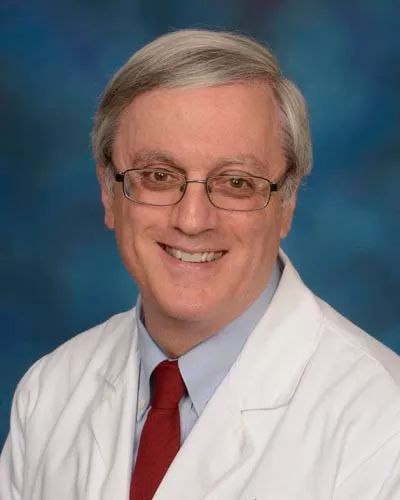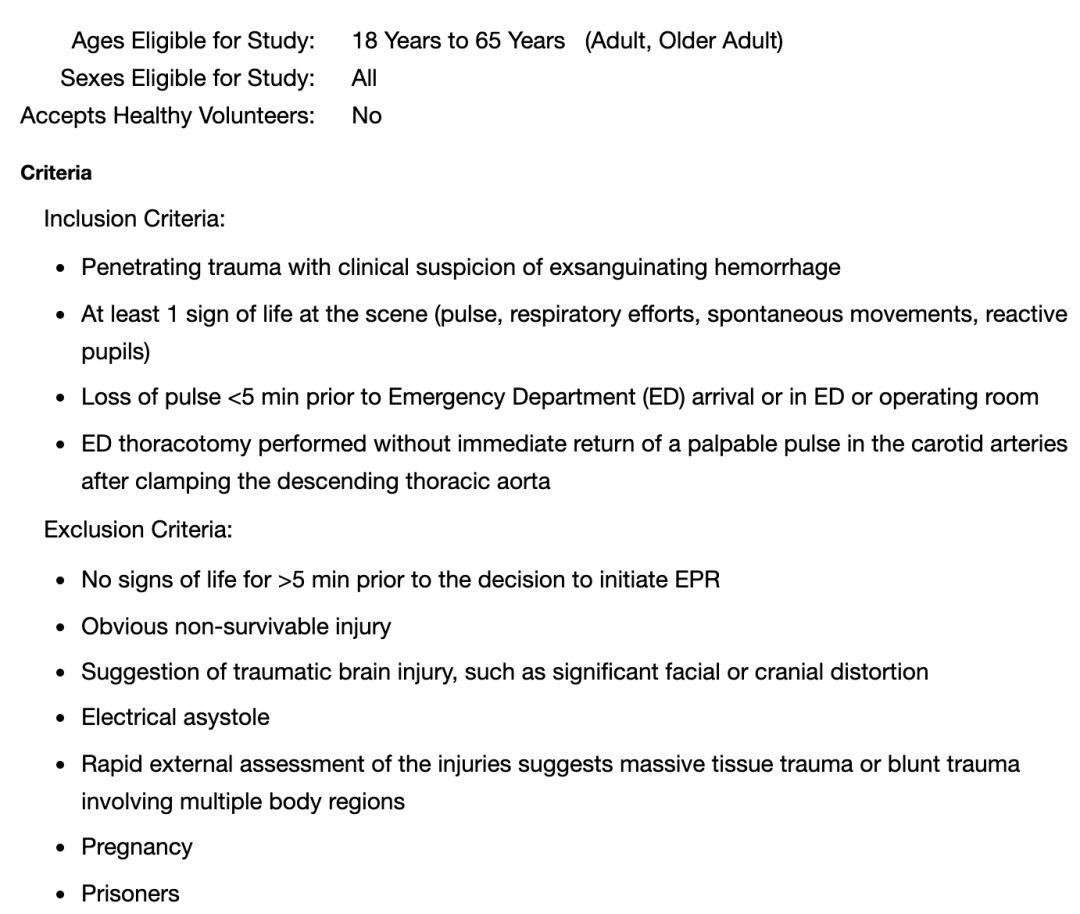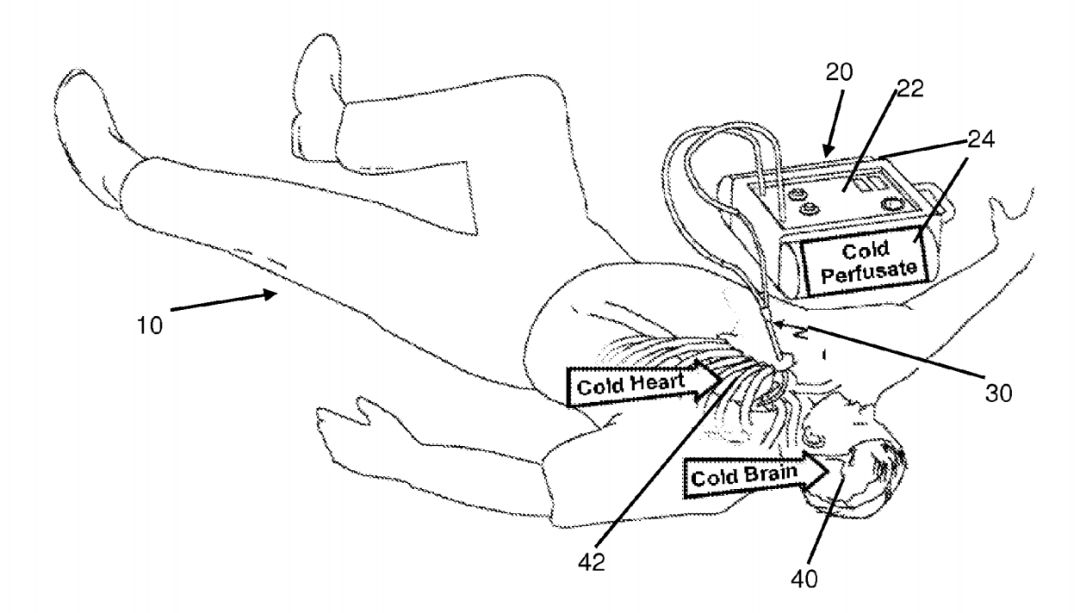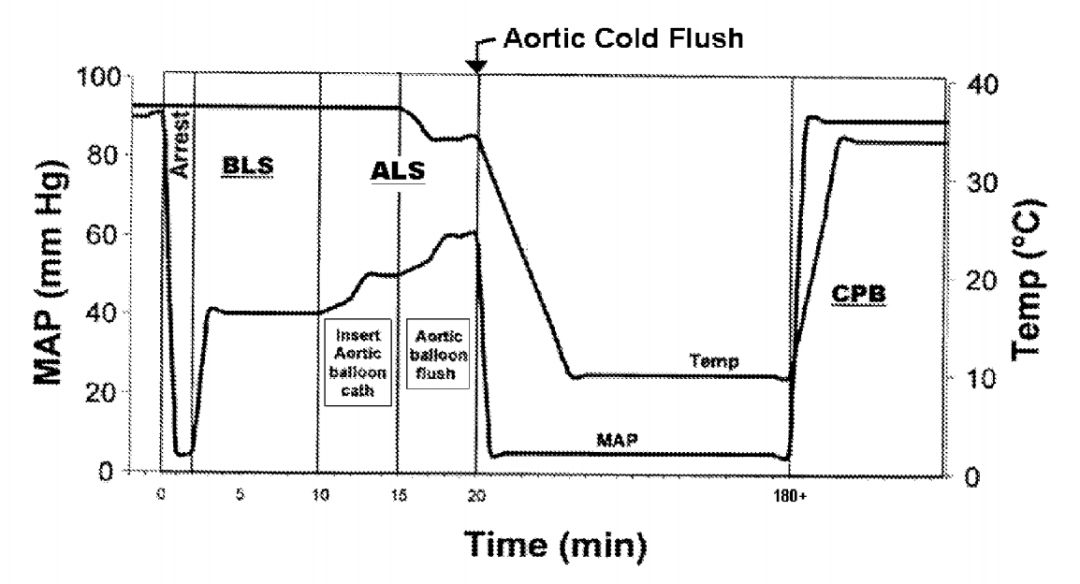If “freezing-surgery-recovery” works, it will change the entire emergency medical care.
Editor’s note: This article is from WeChat public number “New Wisdom” (ID: AI_era), Source: newscientist, Editor: Xiao Qin.
For the first time, scientists at the University of Maryland have put humans into a “fake death state” in order to gain time for the treatment of acute trauma. This technology allows patients to enter a “fake death state” by rapid cooling, and obtains a two-hour “pause time” for patients who had only 5 minutes of rescue time. The doctor was able to perform surgery and then resuscitate.
“Fake death” has always been the theme of science fiction. If it takes 200 years to travel to another galaxy, the astronauts will be arranged to sleep in a high-tech dormant cabin and wake up when they arrive at their destination. In the sci-fi movie “The Wandering Earth,” astronauts in the pilot space station can sleep in times of crisis. This description has been seen in many places such as Star Trek.
Recently, Scientists have for the first time allowed humans to enter a “fake death state” – not to send to outer space, but to fight for acute wounds.
Professor Samuel Tisherman of the University of Maryland School of Medicine revealed that his medical team has at least one patient into a “fake death state.” When they did this for the first time, they felt “a bit surreal.” He did not want to reveal how many people survived.
Professor Samuel Tisherman
The official name of the technology is “emergency preservation and resuscitation” (EPR), which is currently undergoing cardiac arrest for acute trauma (such as gunshot wounds or stab wounds) at the University of Maryland Medical Center. The patient was tested. Severe trauma will cause the patient’s heart to stop beating and lose more than half of the blood. The operation time is only a few minutes, and under normal circumstances they are less than 5% chance of surviving.
If the patient enters the “fake death state” through the EPR, the doctor can have up to two hours to perform the operation and treat the wound.
Let humanity enter the “fake death state” for the first time: in order to save the “dead person”
EPR includes replacing human blood with cold saline to rapidly reduce human body temperature to 10 to 15 degrees Celsius. The patient’s brain activity has almost completely stopped – technically, the patient is dead. They were then disconnected from the cooling system and their bodies were transferred to the operating room.
The surgeon has approximately 2 hours to perform surgery, control bleeding, and treat wounds. Then, The patient will resuscitate through extracorporeal circulation and restore body temperature, allowing the heart to re-bounce.
EPR Process Diagram Source: Guardian
Tisherman said he hopes to announce the full results of the trial by the end of 2020.
At normal body temperature (about 37 degrees Celsius), our cells need a constant supply of oxygen to produce energy. When the heart stops beating, the blood no longer delivers oxygen to the cells. Without oxygen, the brain can only survive for about 5 minutes, and then irreversible damage can occur. However, lowering the temperature of the body and brain slows down or even stops all chemical reactions in the body’s cells, thereby reducing oxygen consumption.
Tisherman’s trial program compared 10 patients who received EPR treatment with 10 patients who received routine treatment. The control group was eligible for EPR treatment, but the team was not in the hospital at the time of admission.
Conditions for receiving EPR treatment
This trial was approved by the US Food and Drug Administration (FDA). Since the injury suffered by the participants may be fatal and there is no other treatment, the FDA is exemptIn addition to the patient’s consent. (Patients cannot get informed consent when they arrive at the hospital in a coma and are close to death. Under US law, such patients can participate in some medical trials without their knowledge.) The team discussed with the local community and An advertisement describing the experiment was published in the newspaper, pointing out the way in which people could opt out.
Tisherman’s interest in trauma research stems from one of his early career careers: At the time, a young man was stabbed to heart because of a dispute over bowling shoes. “Just a few minutes ago, he was a healthy young man, but he suddenly died. If we have enough time, we could have saved him,” he said. This prompted him to start researching how to give the surgeon more time to rescue through cooling.
Animal studies have shown that pores under acute trauma can be cooled for 3 hours, sutured and resuscitated. “We feel it is time to bring this technology to our patients,” Tisherman said. “This is what we are doing. As the experiment progressed, we learned a lot. Once we can prove that the technology is really effective, we can expand the application of this technology and help patients who have no chance of survival survive.”
One of the problems with this technology is that the patient’s cells may be damaged when heated after surgery.
In fact, it’s unclear how long this technology can put people in a state of suspended animation. When a person’s cells are heated, they experience reperfusion injury, in which a series of chemical reactions damage the cells, and the longer the cells are deprived of oxygen, the greater the damage.
The research team described in their patent document “Emergency Preservation and Resuscitation Methods”: “These methods include rapid cooling of the patient with an oxygen-containing cold rinse solution (such as saline). The patient can be cooled to a deep temperature. For preservation, the resuscitation can be carried out by raising the temperature to about 33 ° C to 36 ° C, and then slowly returning to normal within 24 to 72 hours.”
TiSherman said that it may be possible to give people a variety of medications to help reduce these injuries and prolong their time to death. “But we have not yet determined all the causes of reperfusion injury.”
As soon as the patient is successfully saved, the “fake death” test is successful
Tisherman described the team’s progress at a seminar at the New York Academy of Sciences on Monday. Ariane Lewis, director of the Department of Neurological Intensive Care at New York University’s Langeni Health Center, said she thought it was an important job, but it was only the first step. “We have to see if it works, and then we can start thinking about how and where to use it.”
NASA believes that the full dormancy in Star Trek is still an unreachable future. NASA is studying how to get astronauts into a “numb” state, thereby extending their metabolism.
Kevin Fong, an anesthesiologist at the University College London Hospital, said: “Emergency preservation and resuscitation is an attempt to protect dying patients by significantly reducing body temperature and forcing their physiological effects to slow down.”
He said: “Heart-thoracic surgeons have been doing similar things for decades, but this is pushing the technology forward into the emergency department. In emergency medicine, we have been trying to blur the boundaries between life and death. , creating hopes that didn’t exist before. If EPR works, it will change the rules of the game.”
The US Department of Defense provides funding for multiple EPR research projects, including Tisherman’s trials. The Department of Defense’s interest may lie in the ultimate application of the technology on the battlefield: According to one study, 80% of soldiers who died from the Vietnam War without brain damage died of excessive bleeding from the wound.
Matteo Cerri, assistant professor of physiology for synthetic anesthesia at the University of Bologna, said that another method of “fake death” is to simulate hibernation. During hibernation, the heart rate and breathing of warm-blooded animals slow down, metabolism slows down, and body temperature gradually drops to the level of cold-blooded animals.
“In hibernation, your body will have a coordinated response,” Cerri said. “In this experiment, it forced the body to cool down by filling the body with cold liquid.” He added that hibernation is a more effective strategy for long-term cooling, but in an emergency, hibernation is better than Tisherman’s approach takes longer.
Cerri is curious about the full results of the Tisherman trial, especially the long-term effects of cooling fluids on people’s organs and blood vessels.
“These patients are basically dead and there is nothing to lose,” said Kees Polderman, a professor of intensive care medicine at the University Hospital in Basildon, England. “I think this idea is very good. I really, I really hope it will work.”
Polderman said, If the trial successfully saved at least a few patients, he thought the trial was a success. He added that the basic principle of false death is justified, which may make the program that sounds like science fiction a reality.
Boldman said: “If you can prove that you can protect your brain and recover your brain in this way, there are many other possibilities.” “You can even expect to be an astronaut in space travel.” Cryopreservation.”
But walking at the forefront of the times may also trigger a range of ethical issues, said medical attorney and clinical bioethicist David Hoffman.
“If you can get a person into a low temperature stable state for an hour or a day, that’s fine, but if you have to do it for a week or a month… then the problem becomes, how do you decide when? Provide adequate treatment? Who will decide what to do after treatment success or failure?” he said.
But Tisherman’s approach is now more realistic, and its goal is firmly aimed at giving doctors on Earth more time to save lives.
He said: “What I want to say is that we are not going to send people to Saturn. I am not going to talk about freezing people until 50 years later to cure their incurable diseases. We are trying to win more for ourselves. Time to save people who are dying in front of us.”
Reference link:
The cover image is from pexels




